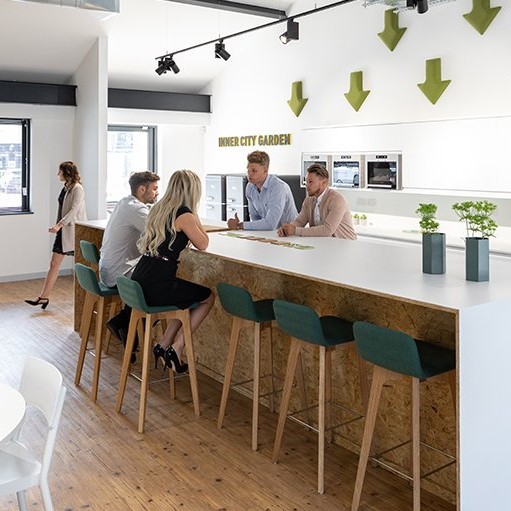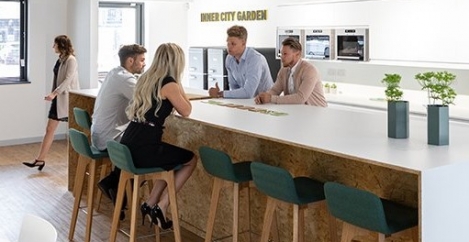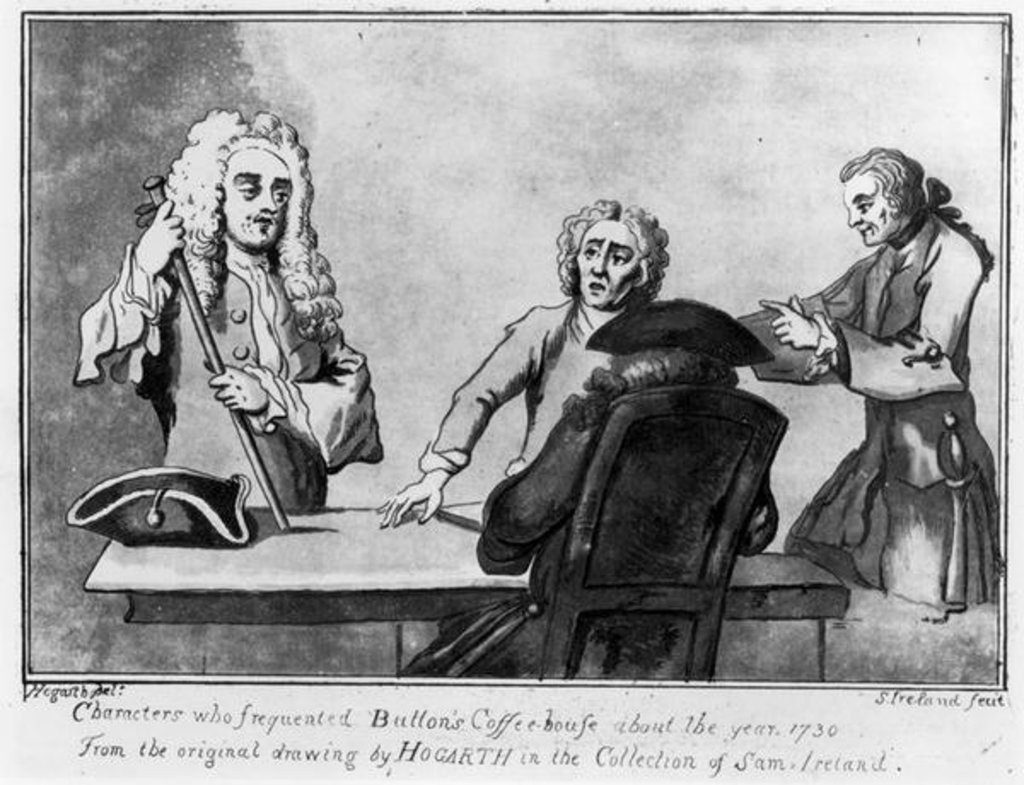June 24, 2020
The links between coffee, shared ideas and the office go back a long way
 The BBC recently published a piece on its website to commemorate the 40th Anniversary of Ridley Scott’s movie Alien and what it could tell us about office design and the workplace (of whatever sort). One of the interesting points raised in the piece was how the depiction of the conditions on board the spaceship Nostromo did away with the gloss and swish of previous visions of the future, replaced by grime, exposed services and strictly utilitarian interiors. The environment was one of the characters, a trick Ridley Scott later repeated in Bladerunner.
The BBC recently published a piece on its website to commemorate the 40th Anniversary of Ridley Scott’s movie Alien and what it could tell us about office design and the workplace (of whatever sort). One of the interesting points raised in the piece was how the depiction of the conditions on board the spaceship Nostromo did away with the gloss and swish of previous visions of the future, replaced by grime, exposed services and strictly utilitarian interiors. The environment was one of the characters, a trick Ridley Scott later repeated in Bladerunner.
Alien, it is often said, is a Freudian film about sex and reproduction and the fears that come with them. But it’s also about the camaraderie and irritation that come with being stuck in a confined space with your colleagues. It’s about the pecking order, the salary disputes, the grumblings about canteen food, the remarks about who is sitting in whose favourite chair. And it’s about the coffee – always the coffee.
It’s an interesting observation because it illustrates how important such issues are for the way people perceive their working lives and the cultures of the places in which they work. The theme is eternal and universal, it seems.
The flat white economy
According to a 2019 study from the Centre for Economics and Business Research (CEBR) think tank, the so-called ‘flat white sector’ is now the most important driver of the UK economy, in terms of the value it adds. The flat white economy, largely made up of smaller businesses in the digital and creative sectors, contributed 14.4 percent of gross value added (GVA) to the UK in 2018, making it more important than traditional sectors such as manufacturing, mining and utilities on that measure.
The CEBR says that it has been tracking the growth of the sector for a number of years and that it had increased its contribution of GVA from 8.7 percent in 2013 to 13.3 per cent in 2016.
The use of this name to describe the UK’s small and startup creative and digital businesses is telling. It more than hints at the idea that such businesses need to cluster in specific places to share ideas and gain access to the networks of power formed by giant firms but cannot afford the excessive rents that often go hand in hand with this hothousing.
Instead they revert to coffee shops and ultimately coworking spaces that ape many of the aesthetic and functional characteristics of the café, especially the way such spaces can bring together people from disparate disciplines and professions to talk, share ideas and come up with new ones, a process that has been ongoing for over three hundred years.
Having grown their businesses in such colonised workplace surroundings, it’s no surprise that they expect to take the features of the spaces and cultures that have nurtured them so well into the places they call home as their business grow larger.
A brief history of the work café
There is nothing new in any of this. The first London coffee house was opened in 1652 by a Greek merchant called Pasqua Roseé who had grown fond of the drink while trading in Turkey, although a previous coffee house had opened in Oxford.
Fifty years later, Britain’s nascent coffee culture was in full swing, although King Charles II had attempted to crush them in 1675, concerned about the free exchange of political thought they fostered.
[perfectpullquote align=”right” bordertop=”false” cite=”” link=”” color=”” class=”” size=””]Writers, journalists, artists and anybody who wanted to share in their thoughts would gather in places like Buttons coffee house near Covent Garden.[/perfectpullquote]
Writers, journalists, artists and anybody who wanted to share in their thoughts would gather in places like Buttons coffee house near Covent Garden. Buttons featured a white marble lion’s head into which people would deposit their stories, thoughts and poems which were published in a weekly newspaper digest.
By the beginning of the 18th Century, there were hundreds of similar cafes all over London. They all shared certain characteristics, including ready access to information, newspapers, ideas and the thoughts of a wide range of people who would declaim on a variety of subjects. Many of these features were described in the diaries of Samuel Pepys.
The coffee houses became hotbeds of innovation. The first stocks and shares were traded in a London coffeehouse, Britain’s insurance industry was formed in Lloyds coffee house, Isaac Newton and his contemporaries frequented the coffee houses near the Royal Society and in 1754, the RSA was established in a coffee house called Rawthmells, a tradition the RSA continues to this day with the naming of the café at its offices just off the Strand.
What drove the rapid growth of such places were exactly the same forces we see in the creation of cafés, agile office designs and coworking spaces today. It is the creation of a community of people who can come together in a shared experience. Having good coffee doesn’t hurt that experience.
What office workers want
Ask office workers what they look for in an ideal workplace and three items that will be close to the top of the list will be comfort, good coffee and reliable WiFi. What the best working environments offer to deliver this trinity is an office design that offers a combination of work, interaction and relaxation that makes the space both more attractive and productive.
[perfectpullquote align=”right” bordertop=”false” cite=”” link=”” color=”” class=”” size=””]What most people want from their working environment is pretty straightforward[/perfectpullquote]
It’s a conduit for many of the most desirable objectives for the organisations, including personal wellbeing, recruitment and retention, serendipity, the development of relationships and the exchange of information.
In fact, the more general research into such issues backs up the idea that what most people want from their working environment is pretty straightforward. They want daylight, fresh air, rest, hygiene, flexibility, control, comfort, heat, socialisation and coffee. These might be basic needs, mostly free at the point of delivery, but it often takes a sophisticated approach to the culture, design and management of a workplace to offer them to people.
Our new white paper looks at the issues surrounding the creation of a new café culture in the workplace, the characteristics of office design associated with that culture, its benefits and they way it might be delivered. In particular, it will consider how, just as work has colonised coffee shops and other public spaces, so too has the coffee shop influenced the form and function of the workplace.
Main image: Office for Arco in Hull

Mark Barrell is Design Director at Boss Design















